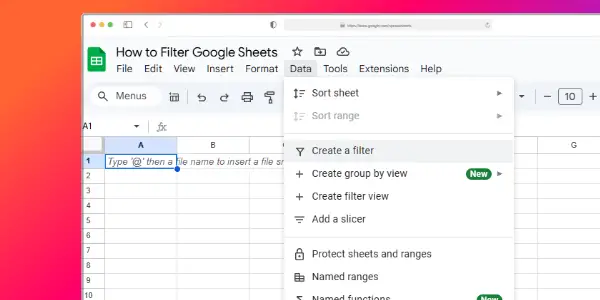If you’re new to the world of change management, you’ve likely come across a lot of new terms. For example, are you wondering what a program management plan is?
A program management plan is a document that outlines the scope and objectives of a program, defines the roles and responsibilities for key stakeholders, and outlines the timeline, resources, and deliverables associated with the program. It acts as a central repository for all information relevant to the program and helps stakeholders stay informed about the program’s progress.
In this article, we will provide an overview of the components of a program management plan.
Overview of Program Management
Program management is the art and science of successfully managing multiple related projects to achieve successful program outcomes.
It involves coordinating the individual efforts of several project teams towards a common goal, often within a larger organizational framework.
It is essential for leaders involved in program management to have an understanding of the fundamental processes, roles and responsibilities associated with the successful implementation of complex initiatives.
Programs require regular monitoring, assessment and review, in order to ensure that objectives are met and updates are applied as necessary.
Program managers must assess any changes or updates that might impact the scope of work outlined in the program plan.
They need to coordinate activities among all stakeholders, such as project team members, other departments involved and external resources when necessary.
Furthermore, they should be knowledgeable on how best to use resources within set budgets while trying to allocate additional resources when needed.
In addition to specialized training, gaining recognition through certified program manager credentials can help professionals stand out among their peers and demonstrate their commitment to project excellence.
Certified practitioners may also experience higher compensation due to their commitment and attainments in this field.
Regardless of certification, it is important for anyone interested in program management not only become knowledgeable about its principles but also possess excellent skills such as communication, problem solving and interpersonal competence for top-level success on any given project.
Definition of a Program Management Plan
A Program Management Plan (PMP) is a document used to organize and coordinate program tasks and activities, and ensure that they are completed in a timely and efficient manner.
The PMP outlines the program strategy, goals, tasks, timelines, budgets, stakeholders, constraints, assumptions, risks, communications plans and other key project information into a single deliverable.
The purpose of creating a program management plan is to have an easy reference document for all stakeholders to understand the objectives of the program as well as its expected outcomes.
It also provides direction and outlines best practices for managing a program successfully from start to finish.
The PMP not only ensures that everyone involved understands their roles in the program process but it also provides insight into the timeline of tasks within each component of the project.
By creating clearly defined plans with well-structured objectives and timelines for completion, both internal team members and external stakeholders can better understand the scope of each project component as it relates to achieving overall project objectives. A well thought out PMP will increase operational efficiencies by:
- Reducing duplication of effort or unnecessary processes
- Helping to identify potential bottlenecks or delays before they become costly problems.
Benefits of Program Management
Program management is a crucial part of any successful project and can help organizations save time and money. Program management plans allow teams to coordinate activities and focus on objectives, while also providing oversight and guidance when needed.
Additionally, program management plans help to ensure that activities are in line with organizational goals and objectives. In this article, we’ll explore the benefits of having a program management plan:
Improved Efficiency
Improved efficiency is one of the key benefits of program management. Through a comprehensive program management plan, projects are conducted on an efficient timeline and resources are allocated according to their business value.
As a result, the organization can complete initiatives in less time and with fewer resources than they would have previously required.
Program management also offers increased visibility into overall project progress, allowing leadership to make informed decisions about the deployment of their staff and other resources.
Additionally, program-level reporting provides organizational executives with comprehensive snapshots that detail interconnected activities across multiple projects and initiatives.
Moreover, program management can help streamline communication processes internally and externally, so stakeholders have an up-to-date understanding of how each project contributes to the end goal.
This helps organizations stay on track while ensuring deadlines are met efficiently and effectively. In short, program management can be used as a tool to ensure that all stakeholders—from executive leadership to individual team members—have clear insight into the goals of a project’s value proposition.
Increased Visibility
Program management provides increased visibility for executive sponsors, stakeholders, and program participants. By clearly outlining the scope of the program and establishing appropriate checkpoints throughout, visibility into all aspects of the project can be improved.
Program managers use formal tracking processes and regularly reported metrics to ensure that all stakeholders are aware of the current project status.
This helps to identify areas in which additional resources may be necessary before any risk or delays occur. Additionally, the use of uniform reporting methods allows for a unified project dashboard with relevant and up-to-date information on progress.
Program management also helps to hold stakeholders and participants accountable by assigning specific roles, responsibilities, and tasks while highlighting areas in which improvement is necessary.
This creates an environment where individuals feel confident in their ability to contribute and where expectations are clearly defined – allowing for a more successful outcome overall.
Reduced Risk
Program management is a proactive, structured way of managing a program or set of projects. This style of management helps identify and manage the associated interdependencies between project elements and activities to ensure the program achieves its desired outcome.
By utilizing program management, organizations can reduce their risk exposure by ensuring that multiple projects are properly coordinated and managed.
Through this type of management, programs are more likely to stay on schedule and within budget, as any risks that arise are more easily identified and managed, allowing for more effective decision making.
Program structures also provide opportunities to identify areas where further investment could be made in order to improve the efficiency of operations.
This type of thinking helps create a competitive advantage for organizations by making the most efficient use of resources available within the constraints imposed by their programs.
- Additionally, program management provides visibility into how individual project elements interact with each other in order to support an organization’s overall goals and objectives.
- This will ensure that an organization’s efforts are properly aligned with its strategic direction while minimizing any potential risks which could derail the program’s success.
Components of a Program Management Plan
A program management plan (PMP) provides a framework to effectively manage a program’s life cycle.
The components of a PMP will vary based on the program’s scope and scale, but they may include an introduction, goals, schedule, budget, resources, risks and performance metrics.
By using a PMP, organizations can ensure that their programs are implemented and managed in an organized and efficient manner.
Let’s explore the components of a PMP further:
- Introduction
- Goals
- Schedule
- Budget
- Resources
- Risks
- Performance Metrics
Program Goals and Objectives
Program Goals and Objectives are the objectives that need to be achieved in order to meet the program’s overall desired outcome.
Examples of Program Goals include increasing customer satisfaction, reducing operational costs, increasing revenue, or meeting regulatory requirements. These goals should be broad in scope and cover the entire program.
Program Objectives are specific outcomes that need to be achieved in order to meet the stated program goals.
These objectives should identify the desired results or products that will result from successful completion of the program’s activities.
They should also specify how these benefits will be measured and benchmarked for success. Examples of program objectives might include reducing labor costs by a certain percentage, increasing sales revenue by 10%, introducing new product variants within a 12-month timeline, etc.
The Program Management Plan should document both Goals and Objectives, detailing how they will be achieved within an acceptable time frame and at an acceptable cost level. The plan should also provide a framework for regularly assessing progress towards specific objectives so that timely corrective action can be taken as needed.
Program Schedule
A program schedule is a detailed timeline that outlines the key activities of a program in chronological order. A program schedule typically includes tasks, assignments, deadlines, and dependencies (activities that must be completed before other activities can begin) between related tasks. The purpose of creating a program schedule is to provide stakeholders with accurate information concerning workloads, resource needs, and timelines for program-level activities.
The development of a program schedule should begin with a review of individual project plans to understand how the components of each project fit into the overall picture of the program as a whole.
Once operating costs and resource demand estimates have been determined for each project, scheduling will be easier.
A critical path analysis can then be used to identify which tasks are dependent on one another and what type of resources are required to complete each task.
The final step is developing an integrated timeline that reflects milestones, dependencies, resource allocation needs, and any major changes which might affect the overall success or completion time frame for the entire plan.
Program Resources
Program resources refer to any human or non-human resource required to complete a program. Resource planning involves the identification, acquisition and allocation of all necessary resources needed to execute a successful program.
Key program resources include personnel, infrastructure, time, capital and other materials. It is important that the program manager consider all of these variables when creating a comprehensive program management plan.
Personnel: This includes all personnel needed for the project such as project manager(s), team members, customer representatives, suppliers and consultants.
All employee dependent on the success of the development work must have their roles defined in an approved project leadership plan.
When identifying personnel from within your organization it is important to consider their individual skill sets and expertise that would contribute to successful completion of the project plan.
In addition an appropriate categorization between those working exclusively on your initiative versus those providing standard operational service should be conducted and documented prior to undertaking any resource planning activities.
Time: It is essential that proper consideration of time be given during resource planning by determining how much time each technical task should take; what affect any slippage on one task may have on subsequent tasks; known holidays where work might not be able to continue; and if overtime would result in cost savings or increased finish date goals.
Utilizing scheduling techniques such as critical path analysis or Gantt Charts will help in properly managing this key program resource prior to launching a project into production and can help maintain healthy morale among teams assigned specific scope items who may start feeling overwhelmed by unforeseen delays in predecessors tasks being completed regularly and on time.
Infrastructure: Non-human resources may include computing facilities like servers, desktops and laptops; software tools including but not limited to databases versions etc.; development tools such as programming languages or web services development libraries; communication tools like email access etc.
Planning for infrastructure resources should not only involve obtaining sufficient availability but also considering capacity beyond immediate needs which may be needed due to scalability requirements imposed by expanding user base over time.
In addition backup systems for each non-human system type should also be considered with resourcing orders placed so that any unforeseen disasters can be mitigated with minimal downtime trials incurred.
Program Risk Management
Program risk management involves identifying potential risks and incorporating strategies to respond to them. There are two broad areas for managing risk—risk avoidance and risk mitigation.
Risk avoidance includes efforts to minimize the exposures that might cause program risks, such as delays or unexpected cost overruns.
Risk mitigation requires strategies to reduce or eliminate the likelihood or effect of a given risk. Strategies may include insurance coverage, contractual agreements with an outside candidate, or utilization of established processes and methodologies within the program.
Risk management should include processes to ensure that identified risks are monitored over the life of the program and monitored by senior management; this will help ensure continued program success while reducing the chances of surprises during execution. These processes can include:
- Rigorous budgeting
- Periodic reviews of staff resources or major deliverables
- Tracking against baselines
- Cost controls in contracts/agreements and associated resource plans (with implicit assumptions)
- Contingency plans for unexpected events or requests for scope change
It should also be noted that continuous clarification of requirements can mitigate many potential risks during a project; therefore, it is important that regular requirements reviews are conducted with all stakeholders to ensure their understanding and support throughout project execution phase.
Clarity in requirements helps ensure there is an agreed-upon outcome along with manageable strategy to attain it.
Steps for Developing a Program Management Plan
A program management plan is an important document that outlines and defines the scope, objectives, goals, and timelines of a large-scale program.
It serves as the roadmap to ensure the success of the program and helps stakeholders understand the approach, processes and best practices involved in managing the program.
Developing a program management plan requires careful planning and organization to ensure the successful completion of the program. Let us take a look at the steps involved in developing a program management plan:
- Define the program scope and objectives.
- Identify stakeholders, roles and responsibilities.
- Develop a timeline and milestones.
- Plan resources and budget.
- Develop risk management and quality assurance plans.
- Develop communication plan.
- Develop a monitoring and evaluation plan.
- Develop a change management plan.
Define Program Scope
Organizations should focus on defining the scope of a program before moving onto any other aspect of program management.
The scope describes the project’s boundary, including what it will and will not include, how it aligns with company objectives and strategies, and how stakeholders perceive the program.
Defining the scope guides teams and stakeholders in making decisions that affect the success of the project. It should be clearly outlined in a Program Scope Statement (PSS) which includes:
- Objectives – what are we trying to achieve?
- Deliverables – what tasks need to be completed to achieve our objectives?
- Scope Limitations – what aspects will not be addressed during this program?
- Outcomes – what specific results do we expect from this initiative?
- Roles and Responsibilities – who will take part in completing deliverables?
It is important that all stakeholders agree on and understand the PSS as it provides a foundation for planning out subsequent steps throughout the course of your program.
Identify Program Stakeholders
Identifying program stakeholders is critical in developing a successful program management plan. Stakeholders are individuals, groups, and organizations who have an interest in or are affected by the program.
It is important to establish stakeholder roles and responsibilities early in the planning process to ensure that all affected parties understand their involvement.
When creating a list of stakeholders for your program, identify any individuals or entities who can influence the success of your project, as well as those that can be negatively impacted should the project fail.
Consider internal stakeholders (which could include departments such as sales, finance and senior management) and external stakeholders (third party contractors or customers).
Once you have identified all relevant stakeholders, thoroughly define each one’s role and responsibility in the program by establishing a communication plan detailing how they will be included at each stage of its development: from formulating requirements to collecting feedback on early builds right through to launch completion.
Make sure that all relevant internal departments are looped into the decision making process and provide clear directions regarding expectations related to timelines and deadlines.
By considering potential risks when determining roles for each stakeholder within your program management plan, you create an environment often leads to success.
Develop Program Schedule
Developing a program schedule for your project management plan sets the expectations for when tasks need to be completed and what resources will be needed.
It’s important to note that a program schedule is not a task list, but it should include your estimated duration and completion times along with a budget delineating exactly how much time and money are allocated to each area of the project.
The beginning of this process includes determining what tasks are encompassed within the project and the necessary duration they need to successfully complete.
Additionally, developing the program schedule includes creating an outline of milestones, activities, interdependencies, cost estimates and more.
An effective program schedule rests on thoroughly understanding each element of the project including overlapping milestones and lower-level activities that need to be performed in order for larger components of the project to occur correctly.
Ultimately, developing a realistic program schedule is critical for setting expectations about usage of funds and completion timeline as well as evaluating progress over time.
As part of this process you may utilize methods such as Pert or Critical Path Analysis or other risk management approaches such as Monte Carlo Simulation in order to ensure successful virtual delivery of your project’s deliverables according to plan.
The goal is for you and your team members to have confidence in their overall ability to manage their development efforts towards achieving desired outcomes associated with the program objectives.
Estimate Program Costs
Once you have outlined all of the components of your program, it is important to estimate the total cost of the program. Estimating costs for a program should start with a review and assessment of the entire program. This assessment can include budgeting for resources such as staff, materials, and space.
At this stage in the development process, it is important to be as accurate as possible in estimating costs.
Depending on the size and scope of your program, it may require extensive research into available staff and materials that match necessary qualifications or specifications outlined in your plan.
As you conduct research and collect information related to potential resource needs, be sure to account for any cost variations or details not mentioned in the initial outline or proposal.
This can be done by verifying pricing with vendor resources or by researching current costs associated with specific services or locations outlined by your plan.
Itemizing each component of your program allows you to better identify areas that may require additional financing or resources should they become necessary during implementation.
Being able to accurately gauge costs at each stage ensures that all aspects are accounted for correctly and helps avoiding surprises as program development progresses.
Develop Risk Management Plan
Risk management is a key part of any program management plan. It is essential to identify and manage risks involved in the program throughout its entire life cycle.
A risk management plan should contain an assessment of the risks inherent in each phase of the program, as well as strategies to identify, mitigate, or eliminate those risks.
Ideally, the plan should start by assessing risk levels assigned to different stages of development during initiation and analysis.
This might include identifying major project milestones or activities, critical success factors, and potential project performance measures.
Afterward, the team should develop strategies to manage identified risks through expansion planning and case formulation methods.
The risk management plan should also include techniques for monitoring, controlling and responding to potential risks that may affect program outcomes.
In particular, it should focus on techniques for mitigating residual threats or ascertaining their impacts on other elements within the project framework during implementation and evaluation stages. Such techniques include:
- Conducting additional research or surveys
- Developing actionable backup plans
- Updating schedules if needed with realistic goals and deadlines
- Running tests in a test environment before deployment into wider areas of operation
- Collecting feedback from stakeholders during monitoring phases!
Conclusion
A program management plan is one of the most important documents you will work with throughout the course of the project.
It serves as the roadmap to success, outlining goals, budget, schedule and resources. It is an invaluable tool for efficiently managing all aspects of a project and everyone involved.
Creating a program management plan requires input from all stakeholders including project managers, sponsors and team members.
Its purpose is to ensure that every aspect of a program or project is taken into consideration and met with a well-defined strategy for success.
At its most basic level, a program management plan should provide important information about the project such as scope, objectives, timeline and budget.
However, it should also include finer details such as individual roles and responsibilities as well as risk analysis processes.
Making sure all these components are addressed will help enhance communication among stakeholders and improve collaboration among team members throughout the duration of the program or project.
A well-thought out plan can also mean considerable cost savings in time and money down the line by avoiding unexpected problems/potential roadblocks before they arise.
:Is a Change Management Plan Included in a Program Management Plan?
Yes, a change management plan is included in a program management plan. Writing an effective change management plan is crucial for successful program management. It ensures smooth transitions and reduces resistance to change. By addressing potential challenges and outlining strategies for implementation, it helps achieve project goals seamlessly.
Frequently Asked Questions
Q1: What is a Program Management Plan?
A1: A Program Management Plan (PMP) is a document that outlines how a program is planned, executed, and monitored. It includes the program’s goals, objectives, budget, timeline, resources, stakeholders, and more. It serves as a guide for program managers and stakeholders to ensure that the program is delivered on time, on budget and with the desired results.
Q2: What does a Program Management Plan include?
A2: A Program Management Plan typically includes the program’s goals and objectives, budget, timeline, resources, stakeholders, and more. It also includes the program’s processes, procedures, and milestones. It serves as a guide for program managers and stakeholders to ensure that the program is delivered on time, on budget and with the desired results.
Q3: What are the benefits of a Program Management Plan?
A3: A Program Management Plan provides a framework for managing and executing a program. It helps ensure that the program is delivered on time and on budget. It also helps reduce risk and increase efficiency. It also serves as a communication tool between program managers and stakeholders, helping to ensure that everyone is on the same page.





